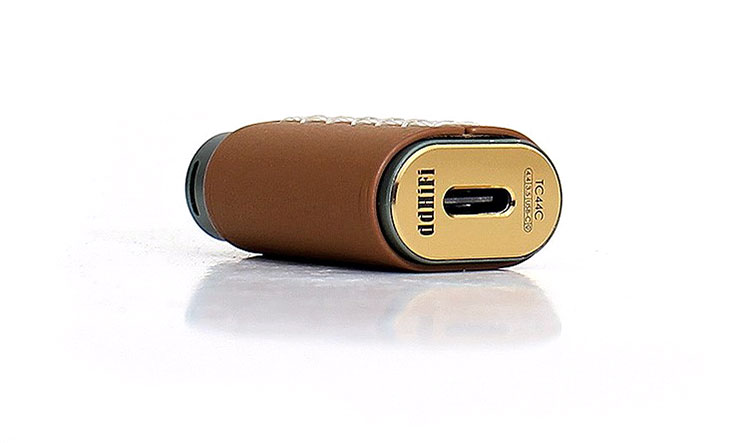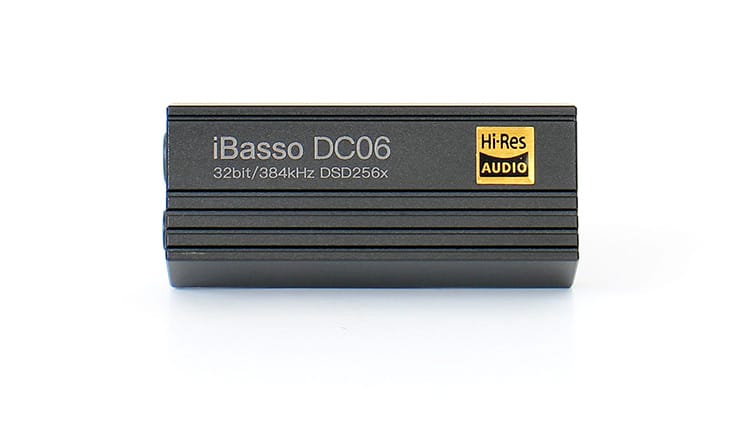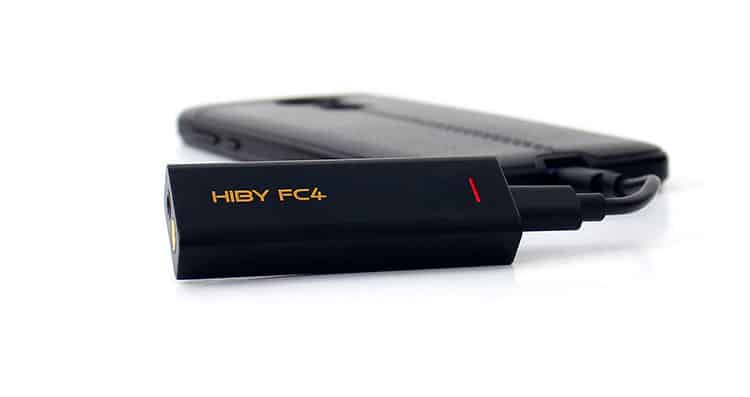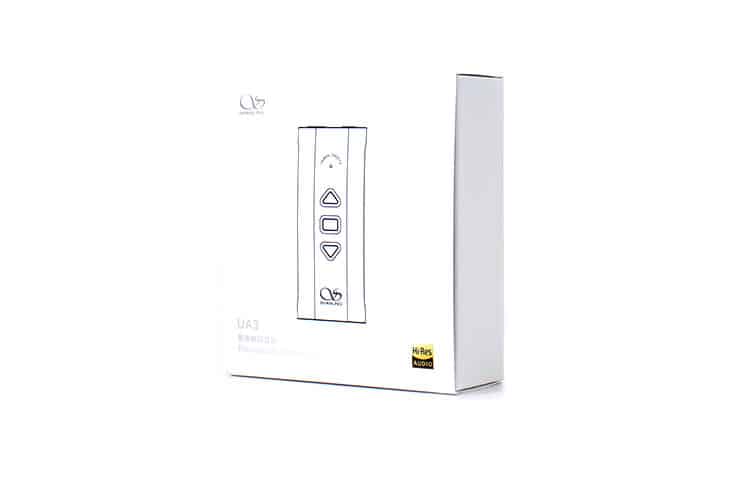Synergy
Power
The Shanling UA3 is a rather cool running dongle DAC far as temperature but a touch consuming on battery life since every time I used it battery power drain was somewhat noticeable but not intolerable.
But of course, I was pushing some rather large cans and things get better with sensitive IEMs, particularly If you moderate the volume.
The power consumption is a good indication that there’s some decent power behind that headphone jack and that the circuitry is not limited by design but I would stick to under 150Ω headphones and remove all those headphones on the list of hard-to-drive as pairing candidates.
Technically you could run a planar can. The HIFIMAN Sundara does play well with this dongle DAC just doesn’t expect optimal performance due to the limited amount of power.
Grado headphones are game and so are other dynamic cans like the SIVGA SV021 and SV023 although the SV023 is a 300Ω headphone. The classic Philips SHP9500 is too loud and needs a gain adjustment, so also the Grados.
The dongle’s usefulness is mostly in the portable realm and I would stick to IEMs on this one, particularly since voltage output capacity seems almost the same regardless of what headphone output port you’re using. But the balanced side gives better noticeable performance and just sounds more dynamic.
Pairing
The Shanling UA3 has a hardware volume control according to Shanling’s literature but I found it to be tied to the source volume control and very sensitive for gain on Android.
On my PC the volume adjustment was more moderately implemented, to say the least. You could also turn the volume control off by a two-second press on the multifunction switch.
However, if on Android the Eddict player has a 2-stage gain control plus a max volume setting that you can employ and adjust things just right. There’s no gain control method for PC so you’ll have to set that on an Android device.
With that said, the UA3 doesn’t dislike many IEMs or headphones because of their tonality because it’s rather neutral but the onboard volume levels increase too fast, especially with sensitive IEMs. Gain is set rather high in stock form and you will have to adjust things within the Eddict player for sensitive IEMs.
So the best combination would be an Android device feeding the UA3 and a good IEM. The rule of thumb here is to start with a low volume before you commit but you should always practice that safety tip.
Multi-driver IEMs like the Shanling MG800. iBasso’s IT07 or FiiO’s multi-driver FH9 would make a good pairing with the UA3 but most others are game too.
Select Comparisons
ddHiFi TC44C
Price $119.00
Technical
The TC44C is a small dongle with a big bite. It sports two CS43131 chips inside the half pint-sized shell that is one of the smallest around compared to other comparatively priced and performing dongle DACs.
The TC44C scales down the numbers far as digital formats are concerned. The TC44C does 32-bit 384 kHz rates plus DSD at up to DSD256 with no MQA just like the UA3.
Power output seems conservatively listed at 120mW at 32Ω but in listening tests it seems there’s more than that and I would consider it similar power-wise to some 200mW or more dongle DACs. The rest of the specifications like the THD+N and dynamic range are almost identical.
Design
The small shell size of the TC44C was made possible by the implementation of a split board design that allows ddHiFi not only to isolate circuitry but by using two smaller boards it allows a parallel configuration cutting down the space the circuitry occupies by half.
The TC44C does not have volume control and seems to embrace a minimalistic and simple concept. It relies on the source’s volume control but it seems perfectly balanced and has no volume sensitivity issues. There’s no app or player either so it’s an “as is” product basically.
The one unique aspect of the shell design besides its small stature is the incorporated Lanyard hole making it possible for the user to hang the TC44C from a necklace. It could sometimes get in the way if you want to use a large 3.5mm plug. The Grado SR80x comes to mind.
Performance
One interesting aspect of the TC44C is that the bass response has a more neutral character; actually, the dongle itself is generally neutral in sound signature. The bass definitely has a clinical character although it can produce a decent kick when needed.
High frequencies seem to push forward some and seem more present, vibrant, and shimmering. Midrange performance is on par but the TC44C seems truer toned and does not have that ligneous or woody effect which is not noticed much until you do an A/B comparison.
Power consumption seems lower when using the TC44C but the UA3 apparently has a higher power output rating and it can certainly drive headphones to louder volume levels.
iBasso DC06
Price $119.00
Technical
Fresh off the review bench, the iBasso DC06 is another dual headphone output dongle DAC that is similarly priced. This particular model is a good bang for the buck model since it has a rather high 335mW at the same 32Ω impedance off the balanced 4.4mm connection.
Dual ES9219C DACs sit front and center and are synchronized by an NDK Femtosecond clock which is actually a common configuration within the iBasso dongle DAC line. When it comes to the digital domain the DC06 might not have the higher rate capacity and sticks to a more modest DSD256 and 32-bit 384 kHz rates but does include 16x MQA capability.
Design
The DC06 carries an old-school design and it somewhat resembles an old-school car audio amplifier, fins, and all. However, there are some sharp corners but to balance that negative point the shell itself is quite small and compact.
Most modern dongle DACs are robustly made and so is the DC06. All the dongles within this comparison have an all-metal body but if I was to judge which one has the thicker skin, I would choose the DC06.
Performance
The DC06 could be considered a warm, punchy-sounding dongle that has a relatively flat frequency response along with a dark, noiseless background. Not that the DC06 is bass oriented or emphasized but it seems the best in this particular region but it’s more likely due to the increased output power.
There is only a hand full of headphones the DC06 cannot push well. I paired this dongle with a Dekoni blue which is a T50 Mk 3 variant. These are not easy to drive correctly but the DC06 managed to do so more than other comparatively priced dongles.
HiBy FC4
Price $99.00
Technical
Candidate number four in this comparison is the HiBy FC4 which offers a well-rounded package since it has a rather high power output, a sensible app, DSD, PCM plus MQA capability that comes from an ES9281PRO which according to ESS is a rather upscale SOC.
What strikes me about the FC4 is that it has better specifications in some areas compared to the higher-tier model, the FC5. Power output on the DC04 is higher and rated at 340mW and 110mW off the 3.5mm connection on top of having dual headphone connections opposite of the FC5.
Another cool feature the FC4 has at its disposal is a fairly decent app which is called HiBy Music. This app has many features but my favorite feature is called MSEB. This feature has some audiophile names behind some tweaked equalization curve adjustments that seem to be one of the more complete DSP implementations I’ve seen on dongle DACs.
Now if you compare digital format capability they seem similar but the FC4 can do MQA rendering. The FC4 does hardware rendered DSD256 and PCM of up to 32 bit / 768kHz so only the DSD portion drops a few points.
Design
Both these dongles have similar body sizes and a similar configuration of buttons and connections. Both are also made of metal but it seems the UA3 is more robust and has the thicker skin of the two.
They both have an onboard volume adjustment set but the UA3 has an extra button that works at a multifunction level and could have new features implemented through firmware updates. Plus, the volume buttons are re-assignable.
Performance
Both these dongles sound similar in the fact that both are neutral with warm, full-bodied bass, a midrange section that might be smoother coming from the FC4 but it seems better defined on the UA3 due to higher detail retrieval capability.
The FC4 does seem a touch punchier and it’s probably due to the extra power output. But the staging capabilities are best on the UA3 or at least tend to portray the larger size stage although the FC4 is not far behind.
One aspect of the FC4 is that vocal presentation seems more intimate and closer while the UA3 pushes vocals forward so for intimacy the FC4 is more of an introvert signature but the rest of the stage is portrayed in a wide manner.
They both portray a very dark background, absent of hiss but the FC4 volume control acts separately from the source volume and gives the listener a more refined and precise volume control.
Our Verdict
The Shanling UA3 is a very good-sounding dongle DAC for the price. The only aspect keeping this dongle from retaining a higher score and surpassing most others is the rather sensitive volume when the gain is set rather high in stock form but that could be worked over with a firmware update and could also be remedied by the Eddict player.
The DAC has a very good ability to extract detail and does staging rather well, actually quite better than most so it seems AKM stepped into this dongle DAC on a high note.
So, in summary, with a hefty, good-sounding output at a low price point, a good app, and a robustly constructed body, this is a heavy-hitting contender in its class.
Shanling UA3 Technical Specifications
- Size 60x25x13
- Weight 5 grams
3.5mm Headphone Out
- Power 2v @32Ω / 125mW @32Ω
- Frequency Response 20Hz to 40 kHz
- THD+N 0004% @32Ω / A weighting @ 1V
- Dynamic Range 119 db @32Ω A-weighting
- SNR 119 db @32Ω A-weighting
- Channel separation 80db @32Ω
- Output Impedance <0.4Ω
4.4mmBalanced Headphone Output
- Power 6v @32Ω / 211mW @32Ω
- Frequency Response 20Hz to 40 kHz
- THD+N 0003% @32Ω / A weighting @ 1V
- Dynamic Range 120 db @32Ω A-weighting
- SNR 120 db @32Ω A-weighting
- Channel separation 110db @32Ω
- Output Impedance <0.8Ω






